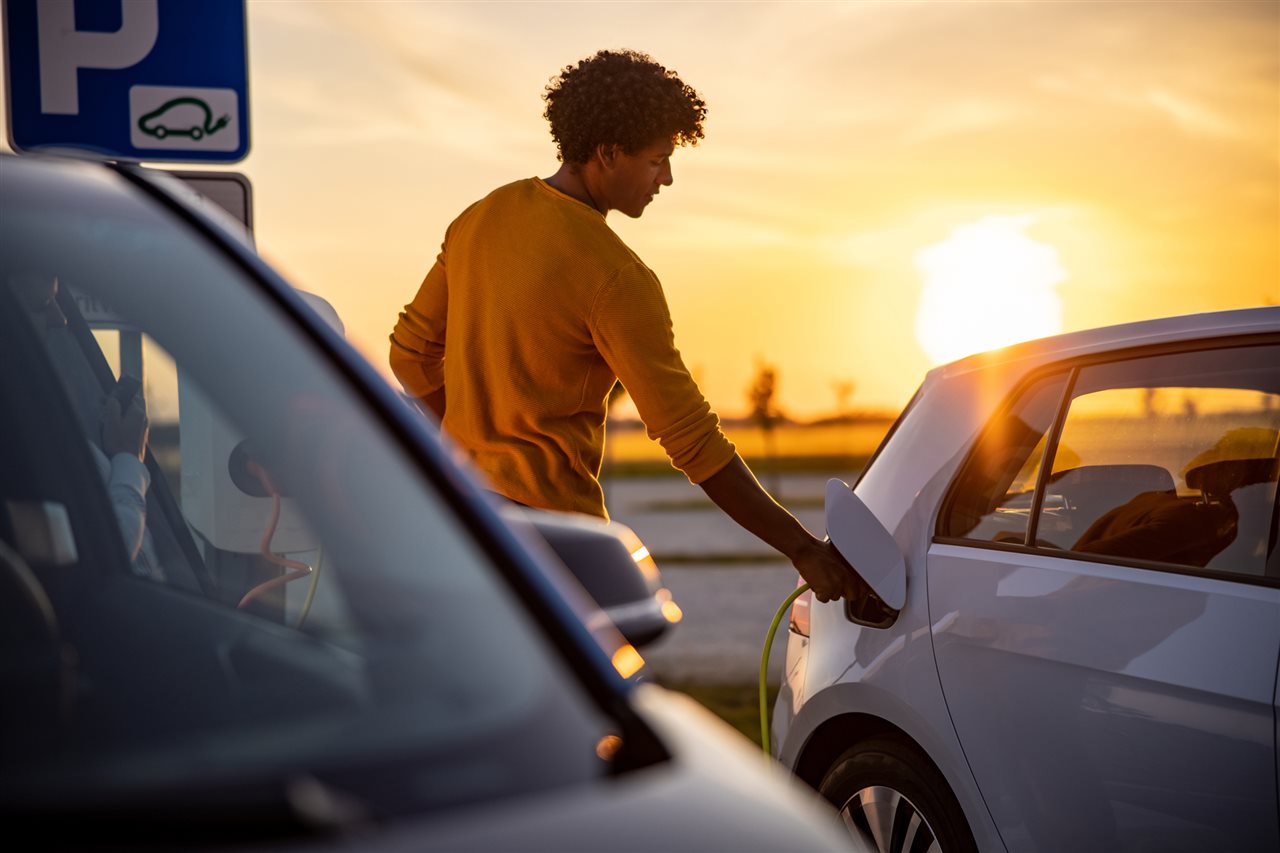
The U.S. has a plan to ensure that by 2030, half of new vehicles sold will be zero-emission electric vehicles (EVs). While progress has been made, a recent survey from the Michigan Economic Development Corporation (MEDC) found 34% of the U.S. population has never driven or even ridden in an EV.
MEDC’s survey also revealed many Americans harbor concerns regarding the transition to EVs, including the cost of buying, maintaining and charging (85%), finding charging stations (85%), and equitable access to EVs and charging options (82%).
Michigan is proactively addressing these concerns by investing in EV projects, establishing accessible charging infrastructure and building a robust EV workforce.

Solving for equitable access to EVs, charging
A survey conducted by AAA found nearly 60% of people experience “charge anxiety,” feeling uncertainty around accessing or using an EV charging station. There are ways to ease this anxiety:
- Integrate charging with other essential services: Adding infrastructure to Wi-Fi hotspots, highway rest stops or postal services, can increase accessibility and make charging locations more attractive and useful, particularly in rural areas. Michigan’s Office of Future Mobility and Electrification (OFME), with Daimler Truck North America and DTE Energy, is developing a “truck stop of the future,” a new charging hub location for freight trucking designed to facilitate the transition of companies’ fleets to EVs.
- Government incentives and support: Government entities can offer incentives and subsidies to private companies to install charging stations. Michigan’s OFME supports partners like Dunamis Charge and Volta to help establish a robust charging ecosystem in previously underserved regions.
- Continued innovation and research: Michigan is at the forefront of developing and implementing new technologies to increase EV charging access. The in-development Electreon wireless roadway will see wireless charging technology embedded into the road, allowing vehicles to charge while in motion and stationary. The electrified roadway will accelerate accessibility to EV charging for consumers and fleet operators, enabling continuous vehicle operations and turning public streets into sustainable shared energy platforms.
Strategies for enhancing EV affordability
Interest is growing in the substantial fuel savings EVs can offer, with three in 10 people expressing keen interest. However, concerns about the cost of purchasing and maintaining an EV outweigh interest in fuel savings. Some opportunities to lower the cost include:
- Lowering production costs: As EV production volume increases, the unit cost will likely decrease. Continued investment in research and development leads to breakthroughs in battery technology, helping reduce vehicle costs. In Michigan, Our Next Energy is developing batteries made from locally sourced metals, making them cheaper to develop. Similarly, strengthening ecosystems of EV component suppliers and service providers will create a more competitive market, leading to more choices and better prices for consumers.
- Flexible pricing models for charging: Income-sensitive pricing models can make EV charging more affordable. Discounted or free charging during off-peak grid hours can also improve affordability. Utility companies can play a pivotal role in this step by supporting buildout of charging infrastructure and offering special rates for charging during non-peak hours. Michigan’s utility companies, like DTE Energy and Consumers Energy, offer programs and resources to help EV drivers save.
- Government incentives for consumers: Tax credits, rebates or subsidies reduce the upfront cost of EVs, and reduced registration fees and lower road taxes can lessen the overall cost. The Biden administration and Michigan government have implemented such rebates.
- Vehicle-to-grid support: Mobility leaders are developing technologies that allow EVs to sell excess energy back to the grid. This can provide an additional income stream to help offset costs for EV owners.
EV education and awareness
Nearly a quarter of the population (24%) is interested in the sustainability benefits of electrified transportation. Still, because concerns about the transition to EVs persist, mobility leaders must educate consumers and the workforce about why benefits of EVs outweigh concerns.
For general consumers:
- Educate prospective car buyers on the advantages of EVs. Car dealerships can familiarize buyers with EVs and the supporting infrastructure available, while utility companies can share information about the integration of EVs with the grid, renewable energy options and off-peak charging benefits.
- Establish community centers where people can experience EVs firsthand. Manufacturers and dealerships could host events to showcase their EV models, allowing people to test drive various options before committing to a purchase.
- Mobility experts need to develop user-friendly resources that offer accurate, comprehensive information on the benefits of EVs, maintenance best practices, charging options and total cost of ownership. Websites could also include online tools that compare the total cost of ownership, emissions and other key parameters between EVs and internal combustion engine vehicles.
For mobility talent and future workforce:
- Educational institutions can incorporate EV and sustainable transportation information into curriculums to instill interest in related careers. For example, the University of Michigan recently established a $130 million EV center designed to prepare students for an EV future.
- Two in 10 people (21%) believe the technology industry will be critical for America's long-term economic success and stability, and 14% think the same about the semiconductor industry. These industries are essential to the long-term success of EVs, and educational institutions and mobility companies can demonstrate how the transition to EVs is critical to supporting the nation’s continued competitiveness and success.
An electrified future
With more curiosity and interest in EVs, the U.S. is closer than ever to widespread adoption. However, there is still work to be done to bridge the gap between consumer and EV ecosystem readiness — and Michigan is leading the charge.
Achieving a sustainable and widespread transition to EVs depends on increasing accessibility to charging infrastructure, making EVs more affordable for consumers, and educating the public about the myriad of benefits EVs offer. The state's proactive and collaborative approach to addressing these factors can serve as a blueprint for success nationwide.
For more information on Michigan’s initiatives, visit https://www.michiganbusiness.org/mobility/evecosystem/.



